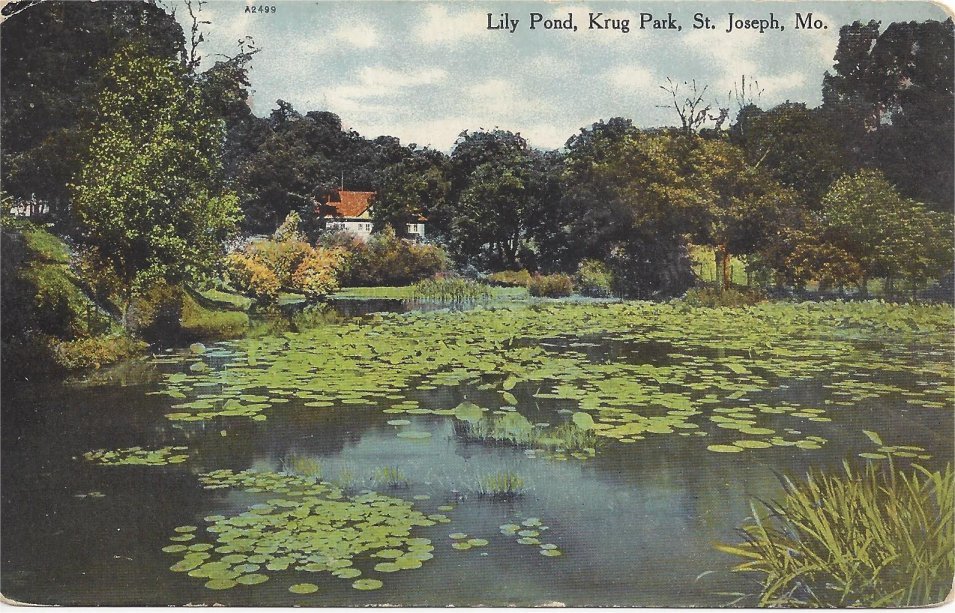
HISTORY OF KRUG PARK
THE KRUG FAMILY
-

Henry Krug Sr.
Born in Germany in in 1822, Henry Krug arrived in St. Joseph, Mo. in 1859 with his brother William. Together, they operated a grocery store, a meat packing plant, invested in the Union Street Railway Company with horse-drawn cars, and were founding contributors to the German American Bank on 7th and Felix St. His home, Pine Ridge, was built in 1870 in the north end of the city, and in 1890 he donated 20 acres of land adjoining his property to the City of St. Joseph for the creation of Krug Park.
Henry Sr. brought in Rudolph Rau to design and create the gardens and features in the original park. Later, Mr. Rau became the Superintendent of Parks for the City of St. Joseph. Many of the postcards and photographs on this page are examples of his dedication and work.
Photo used with permission courtesy of St. Joseph Museum. -

Henry Krug Jr.
The only son of Henry Krug Sr. and his wife Louisa was born in 1861 in St. Joseph, Mo. and joined the family business of meat packing at the age of sixteen. He married Selma Hegner in 1892 and built his own home at 1105 Krug Park Place. He served as the Chairman of the Board of American National Bank, honorary President of the St. Joseph Library Board, a trustee of the YMCA and of the St. Joseph Historical Society.
After his father’s death and at the request of his mother, Henry Jr. gifted the City of St. Joseph an additional 138 acres of land for Krug Park. The Park now totals over 160 acres of wooded and landscaped natural beauty enjoyed by generations of St. Joseph families.
Photo used with permission courtesy of St. Joseph Museum. -

Mrs. Selma Krug
After her parents’ death in her childhood, Selma and her sister Edith were raised by Henry Sr. and Louisa Krug. In 1892, she married Henry Krug Jr. and lived at their home at the corner of Krug Park Place. She and her husband made 3 donations of land to Krug Park, making it the largest park in St. Joseph.
Photo used with permission courtesy of St. Joseph Museum.
The Original Park
1890-1940.
.Henry Krug hired Rudolph Rau to create the landscape for the park. Mr. Rau was responsible for lavish flower gardens, walking paths, a large glass Conservatory, animal exhibits and a lily pond. He became the Superintendent of Parks for 37 years and after he retired, he and his sons owned a nursery on the north edge of the city.
All photographs used with permission courtesy of the St. Joseph Museum
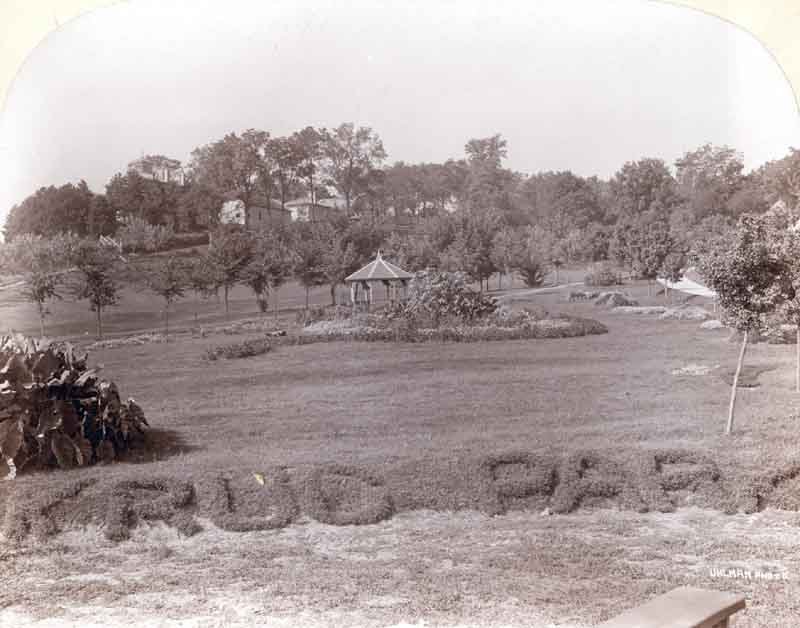
In this early picture of Krug Park, the name was spelled out in flowers in the foreground and the gazebo is visible in the distance.
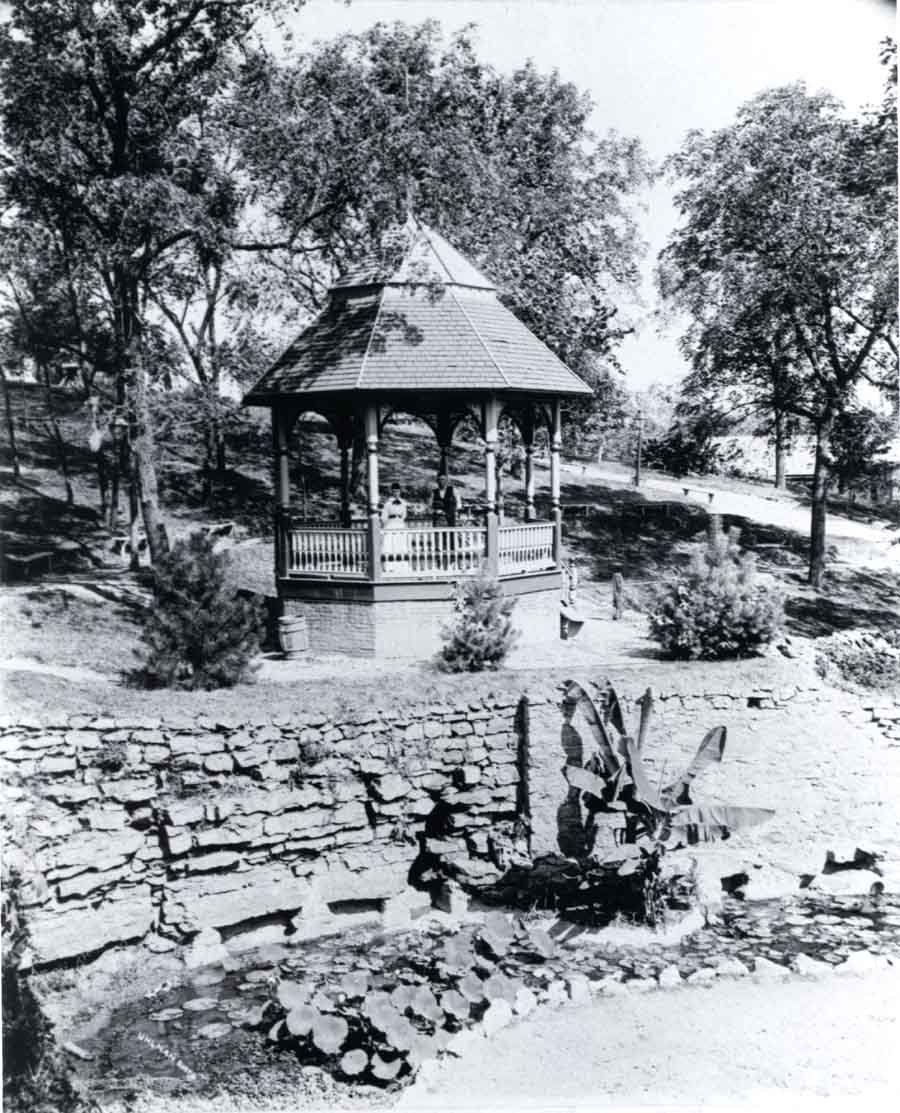
A close up view of the early gazebo and bandstand.
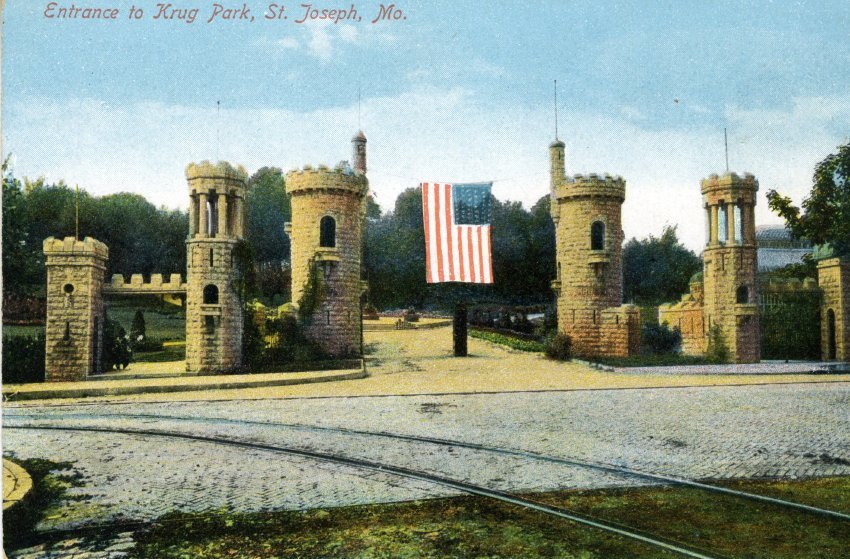
Entrance to the park from Krug Park Place, a residential street one block south of the current entrance today. The original park was a pedestrian park of 10 acres and no motorized vehicles were allowed. Most visitors arrived via the trolley and were dropped off and picked up at this entrance.
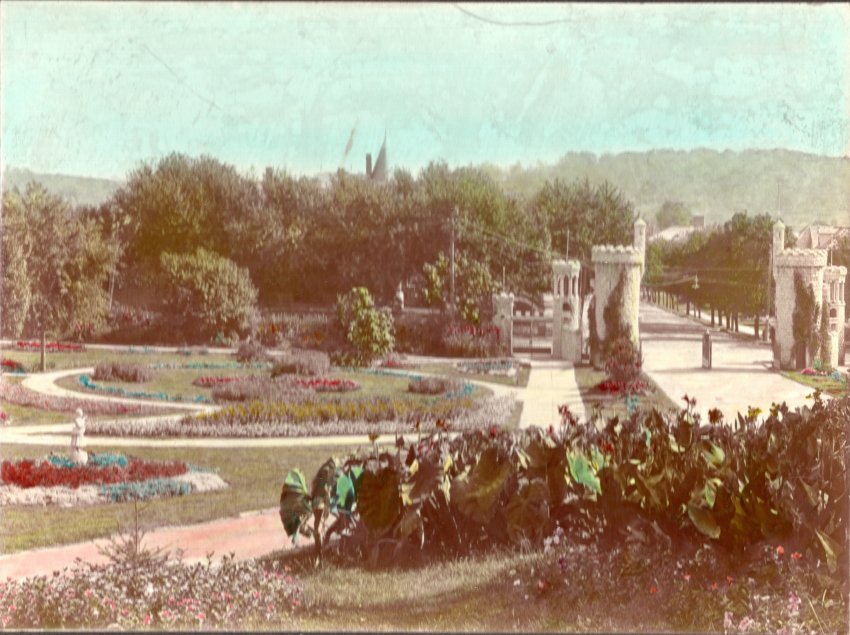
View of the entrance looking back toward Krug Park Place from inside the park.
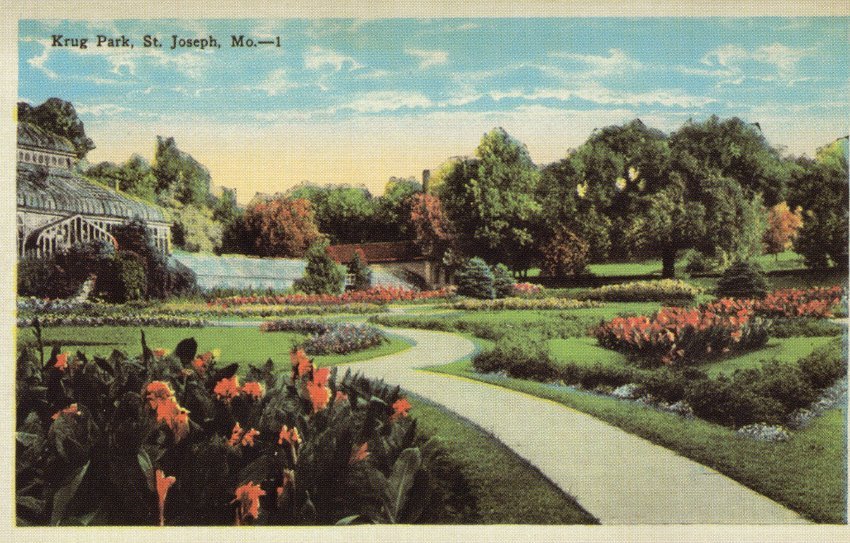
Floral garden path designed by Rudolph Rau.
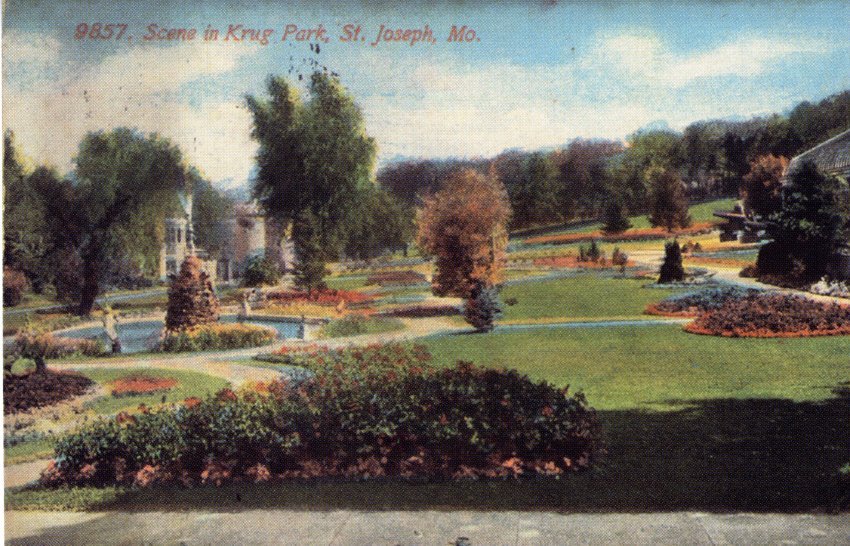
A view of the floral gardens designed by Rudolph Rau.
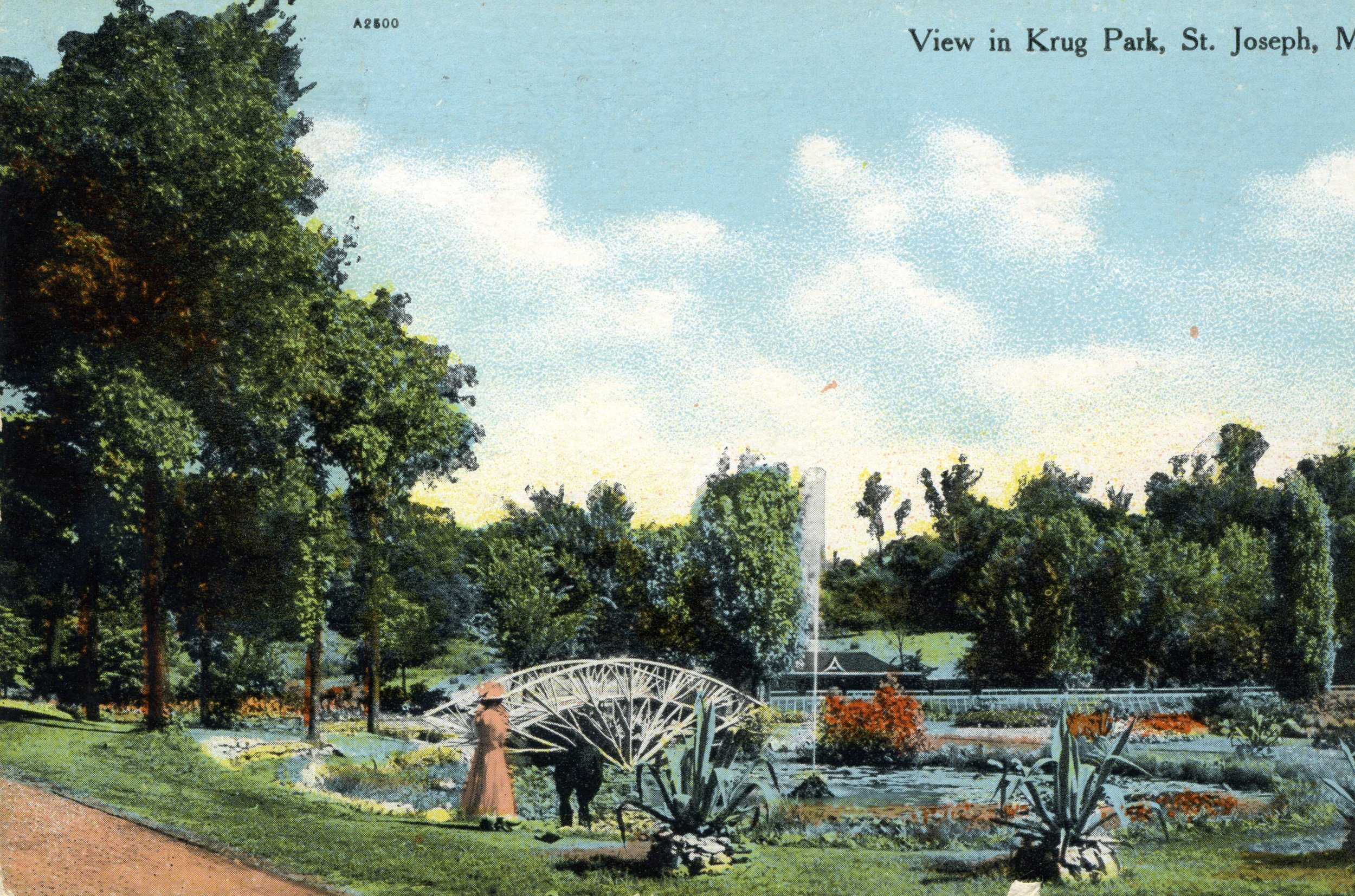
View of the Lily Pond and fan bridge. This was located where the lower parking lot is today southeast of the circle drive.
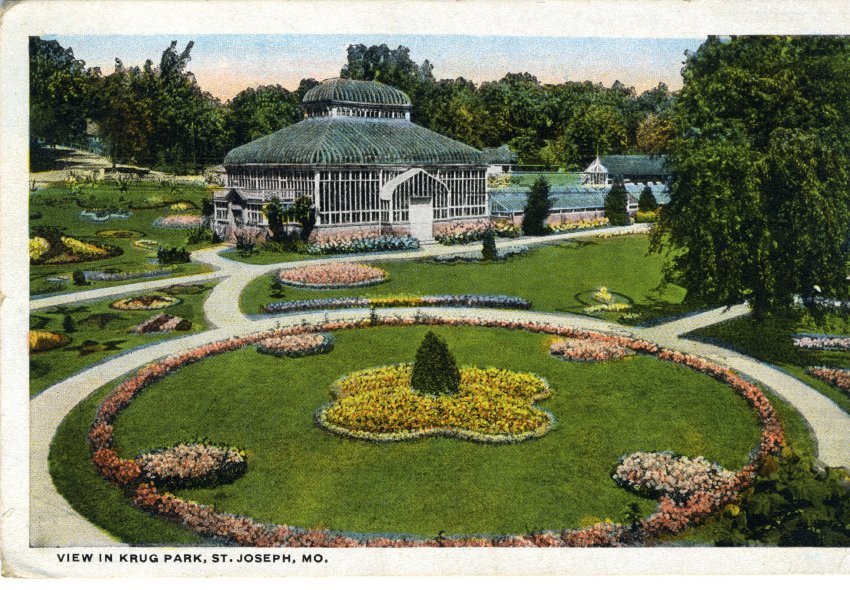
The Conservatory. This housed many varieties of plants, including banana trees. It also was home to monkeys as part of the menagerie of Krug Park.
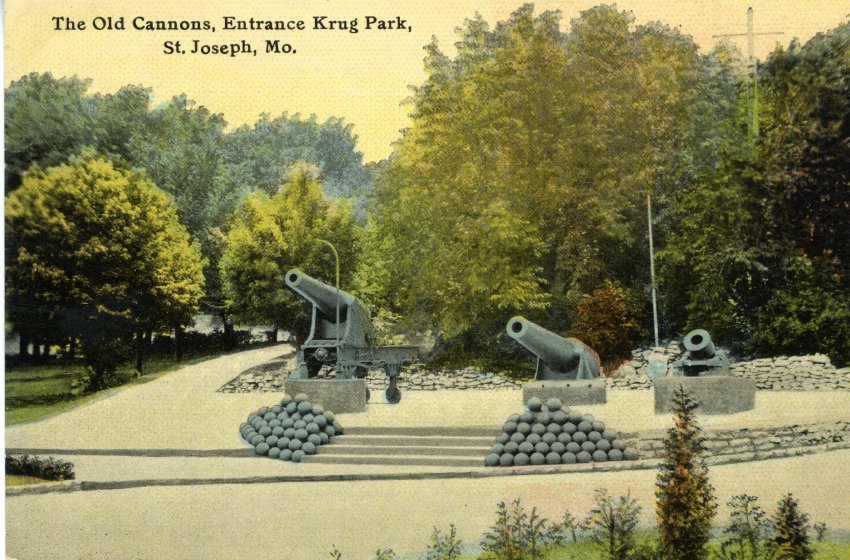
An early addition to the park was a set of cannon with stacks of cannon balls. They were eventually donated to a scrap metal drive during World War II.
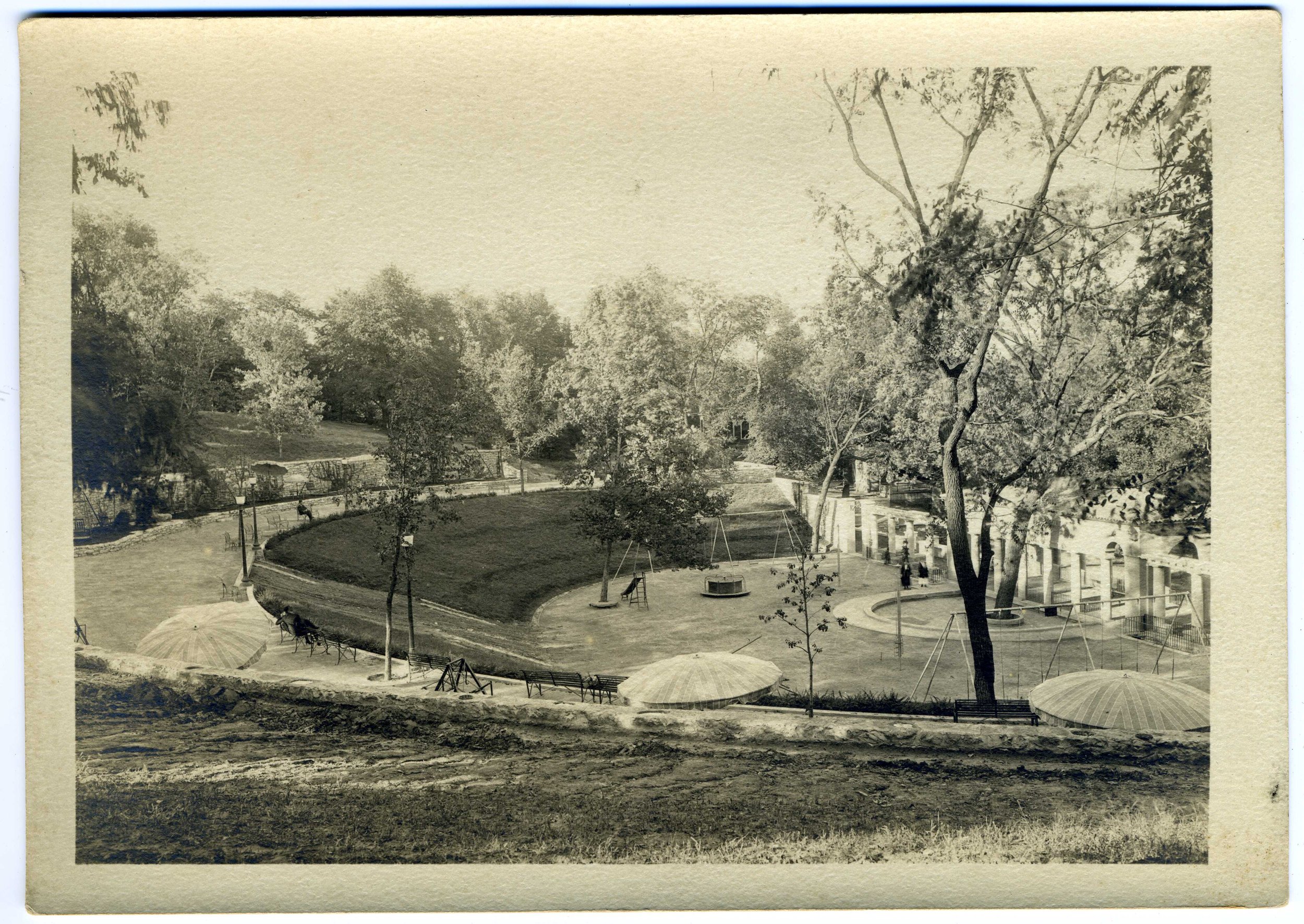
Originally planned as an amphitheater and stage, this area became known as the Children's Circus when a playground was installed. The semi-circle area was once the stage, but later became a shallow wading pool.